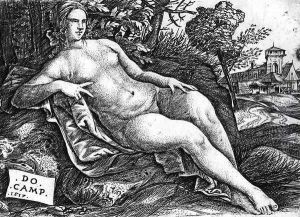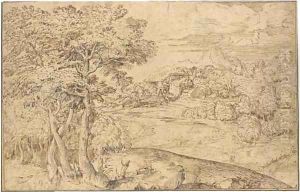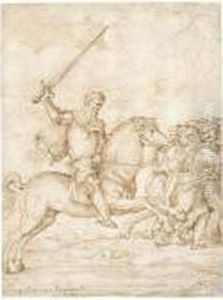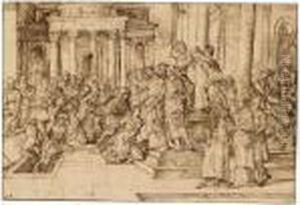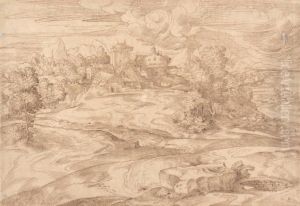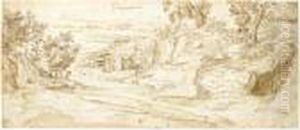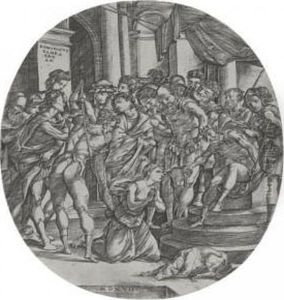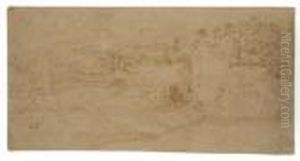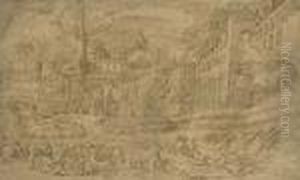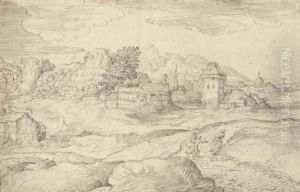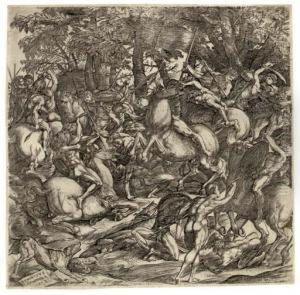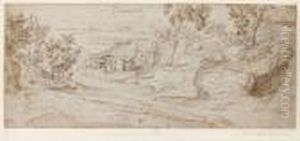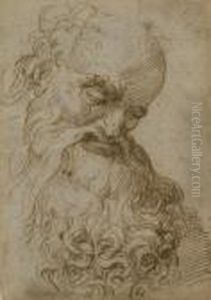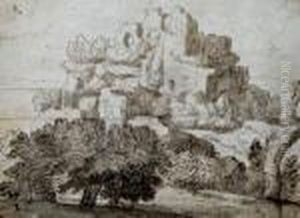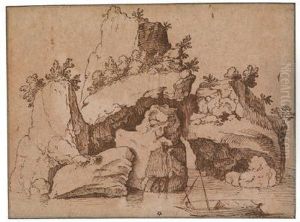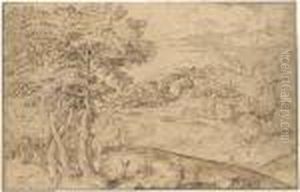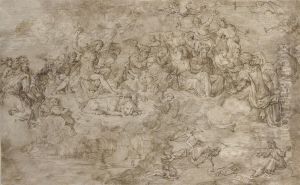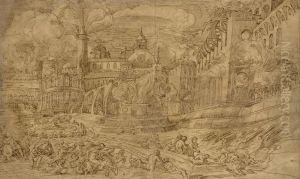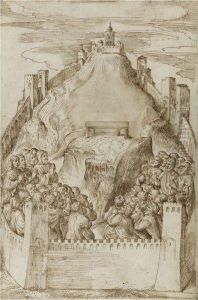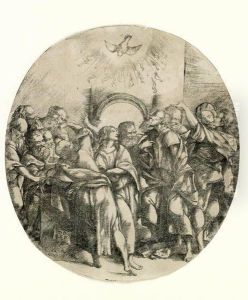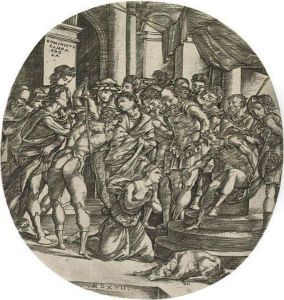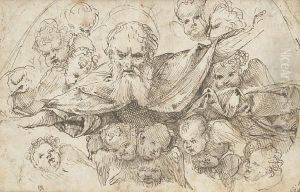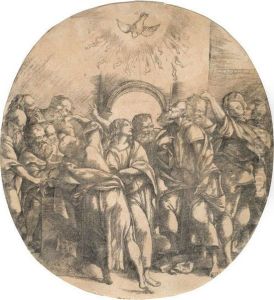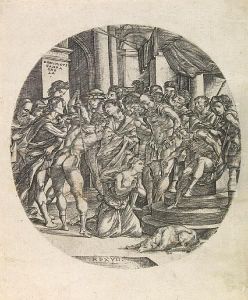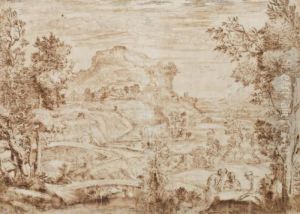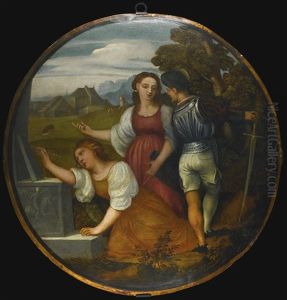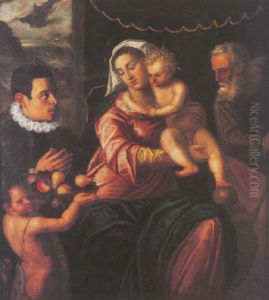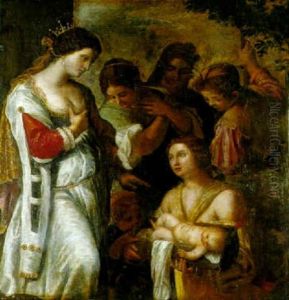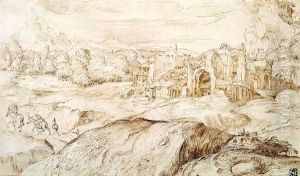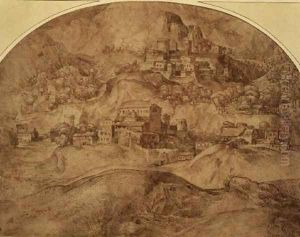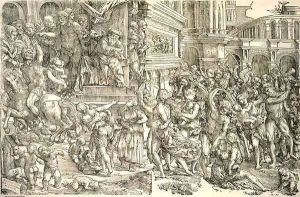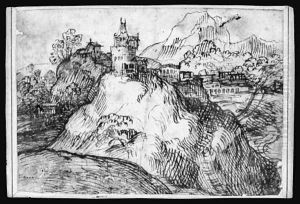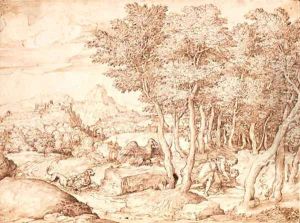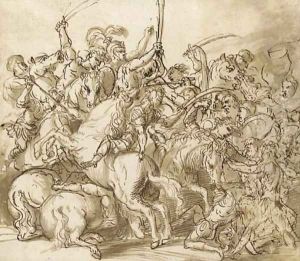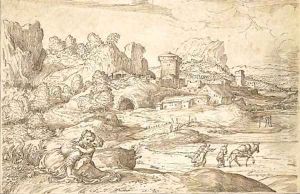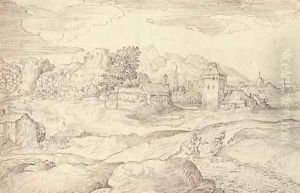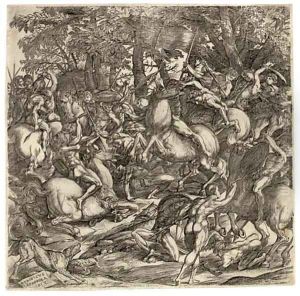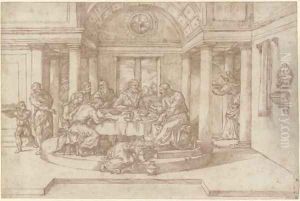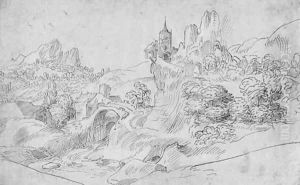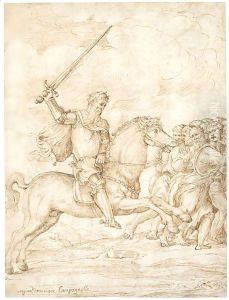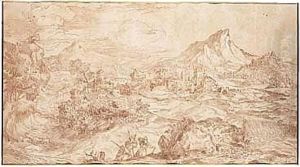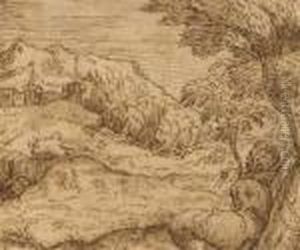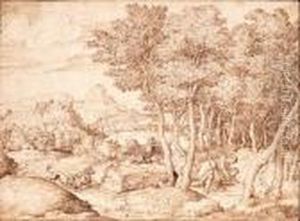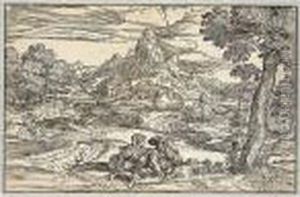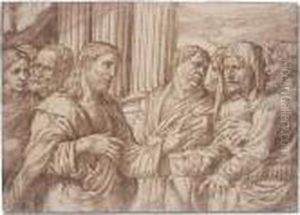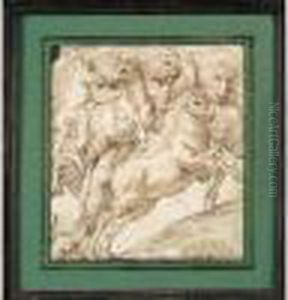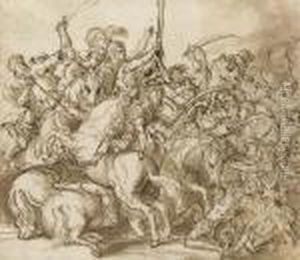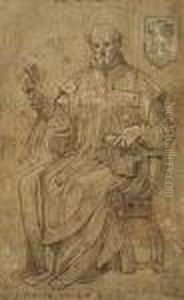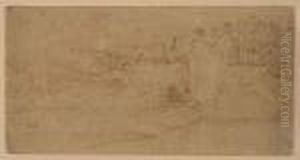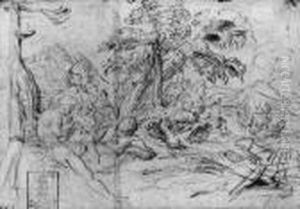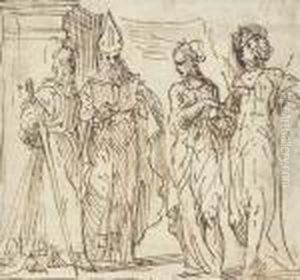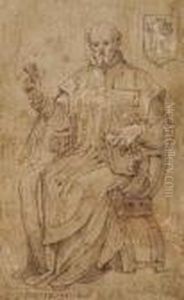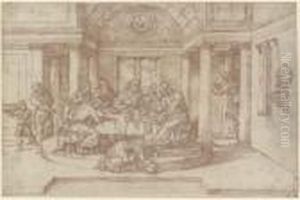Domenico Campagnola Paintings
Domenico Campagnola was an Italian painter and printmaker of the Renaissance period, born in 1500 in Venice, Italy. He was an adopted son of the painter Giulio Campagnola, who was influential in his early training and development as an artist. Domenico is particularly known for his work in engraving and woodcuts, although his paintings are less well-documented and fewer in number.
Campagnola’s style was significantly influenced by the Venetian school, especially the works of Titian, with whom he is believed to have collaborated on some projects. His engravings and woodcuts reveal a mastery of the medium, characterized by dynamic compositions and a fine attention to detail. His prints often depicted landscapes, mythological scenes, and pastoral subjects, which were popular during the Renaissance.
One of his most famous works is the series of 20 landscape prints, which are considered some of the earliest pure landscape prints in Western art. These works display a keen observation of nature and a sophisticated use of the engraving technique to create depth and atmosphere. Campagnola's prints had a significant impact on the development of landscape art in Italy and later influenced Northern European artists.
Throughout his career, Domenico Campagnola was associated with various artistic circles and worked in different cities, including Padua, where he created many of his prints. He was also active as a draughtsman, and his drawings are noted for their lively line work and expressiveness.
Domenico Campagnola's contributions to the printmaking field were substantial, and he helped pave the way for later artists to explore and develop the landscape genre. He passed away in 1564 in Padua, leaving behind a legacy that is chiefly remembered through his prints and drawings, which continue to be studied and admired for their artistic and historical significance.
